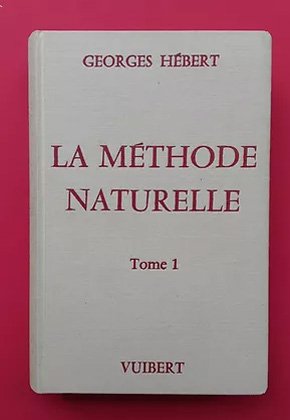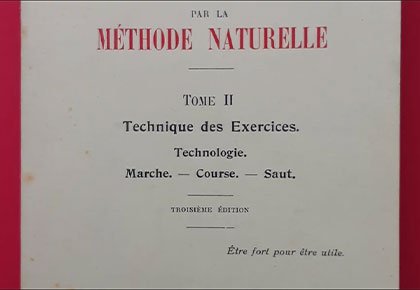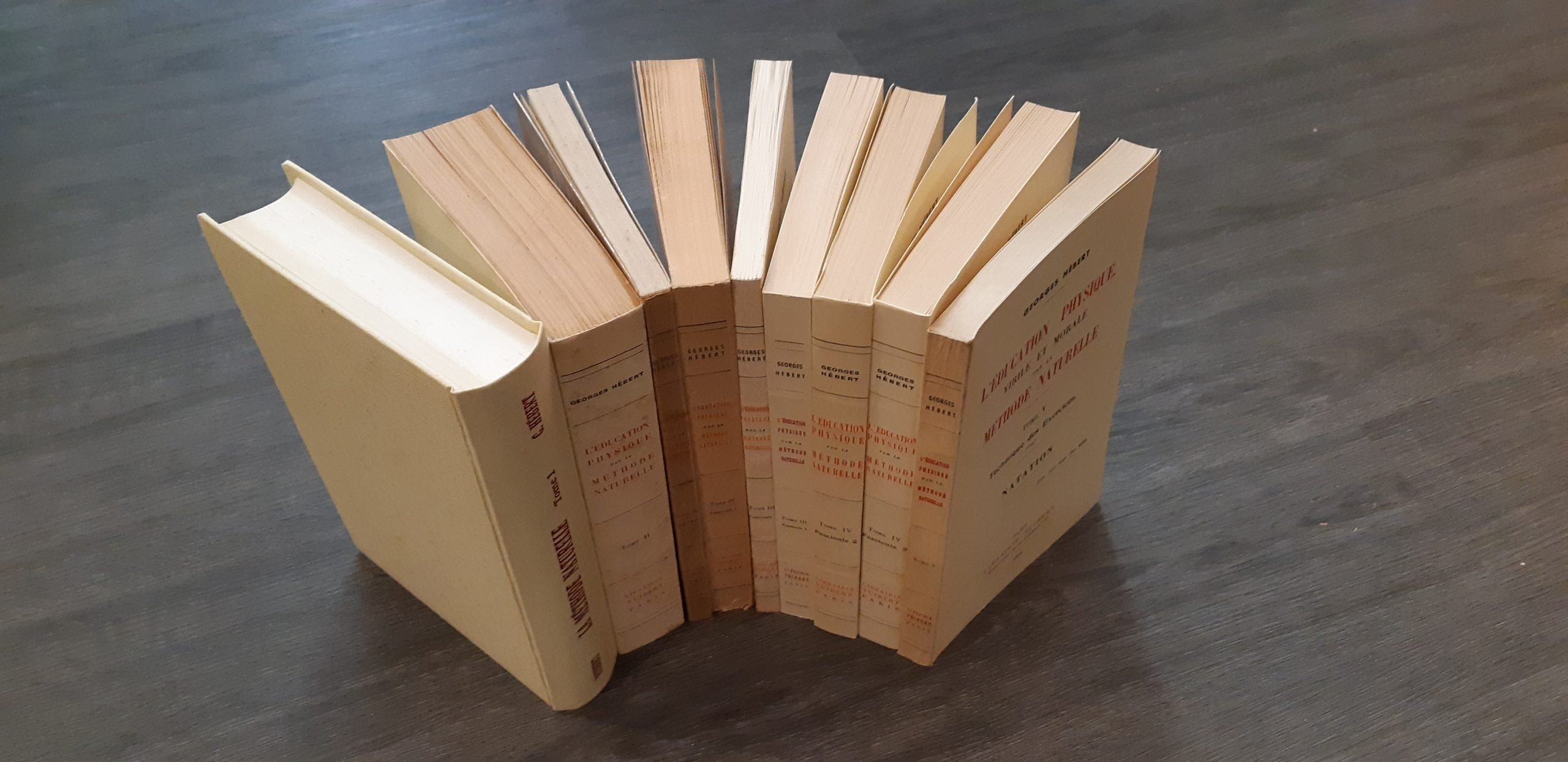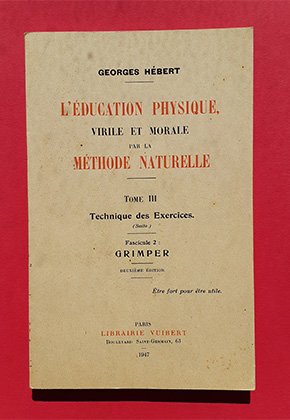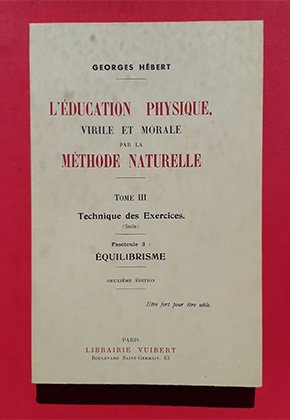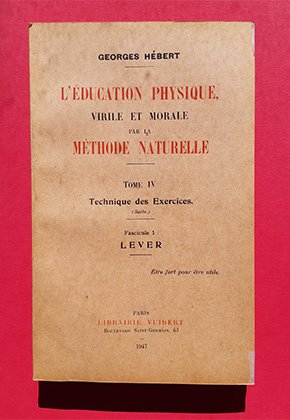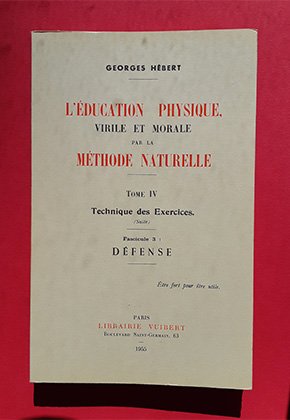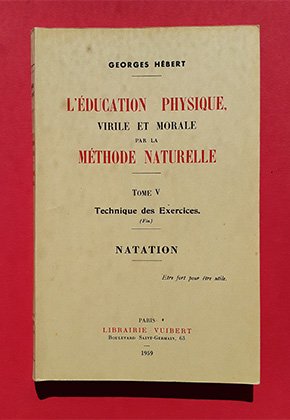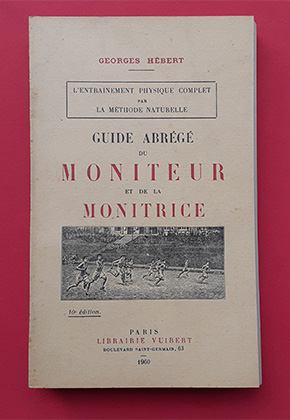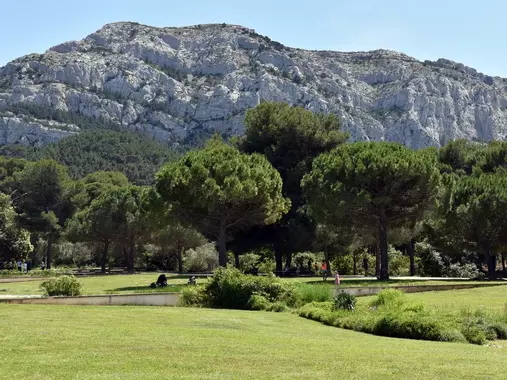1919 :

At the end of the war, Hébert was 43 years old and disabled in one arm as a result of his injury. He is reformed by the army.
The College of Athletes of Reims is in ruins, victim of the bombings from the beginning of the war.
Several of his collaborators were killed.
Demeny died in 1917.
When peace returned, sports movements were favored and gradually abandoned the Hébert method.
The army itself, which had sought Hébert in the face of the cruel necessity of the fighting, abandoned the Natural Method in favor of less utilitarian training.
She will come back to it later when the same causes produce the same effects…
Despite this atmosphere, Hébert brought together a few instructors trained in Reims, founded in 1919 in Deauville, a gymnastics college for women and children:
“the Palestra”
A revolution at that time, when the emancipation and physical education of women was hardly considered.
Another establishment of the same type as the Palestra will also be created in the south east at the Château des Bormettes in La londe les Maures.
He will quickly entrust the direction to Yvonne Moreau.
She is a former student of Demenÿ and the college of Reims. He married her in 1923. They had two children: Jeanne and Régis.
At the Palestra, Yvonne and Georges Hébert develop a broad vision that includes:
A complete physical training by the Natural Method.
Learning all common manual work:
housework: cleaning, cooking, sewing, painting, maintenance, repairing a house
gardening work: use of tools, pleasure garden and vegetable garden

- Moral and mental culture: order, accuracy, frankness, sense of duty, harmony, respect for common rules, good humor.
- An intellectual culture: courses relating to physical education, literature or history,
- An artistic culture: lectures on art and antiquity; dances and songs.
- A naturist initiation (in the philosophical sense, not to be confused with nudism): healthy food, air and water baths, etc.
The Palestra is “exported” to England. The English brochures add one more element: the study of French!
Yvonne Hébert is very dynamic but naturally discreet, she signs articles under the pseudonym “la monitrice”.
In addition, she takes an active part in the writing of the book “Muscle and feminine plastic beauty” where one feels a strong influence of the sculptor Rodin.
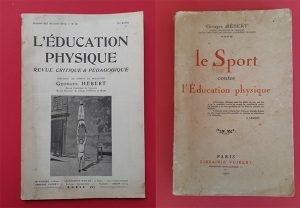
In 1922, Georges Hébert republished the quarterly review:
” Physical education ”
which he will lead until 1955, shortly before his death; This “rostrum” will allow him to spread his ideas throughout the educational and sporting world, because many convinced sportsmen listen to him and take advantage of his technical teachings.
In 1925, he published a book entitled:
“Sport against physical education”.
The controversy is intense: he denounces the physical, social and moral dangers and misdeeds of sport in its misguided conception (spectacular sport / money / violence / drugs etc.)
He definitely falls out with De Coubertin.
In 1930, 55-year-old Georges Hébert founded the first female nautical school in the world aboard the Alcyon, a three-masted schooner donated by a patron.
It thus proves that women have the same physical qualities and especially of character as men. We had never seen women in the mast of a ship!
This school will be a great success. Unfortunately, the patron having had a reversal of fortune, Hébert returned the ship to him, which was then sold.
It was following this original initiative that the French Navy began construction of two sail training ships, the Étoile and the Belle-Poule, which would go to sea in 1932 and are still in service today.
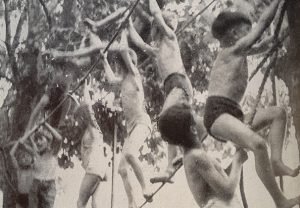
Moreover, despite the indifference of the public authorities, which Georges Hébert regularly denounced (considering that it is the role of the State to teach, in the same way as “intellectual” education, physical education to young ), it is consulted, both by public organizations and schools (Firefighters, SNCF, EDF, the Parisian police, etc.) and private (Scouts movements, Michelin factories, Ecoles des Roches, etc.) who adopt the method within their structures. or establishments. This adoption will also ensure a very wide dissemination of the method.
He met at that time a Belgian, Marcel Beugnier, who with 2 of his relatives, Alexandre and Nelissen, would then play an important role in the transmission and preservation of his doctrine by disseminating it widely in Belgium after the war and by creating the ” Belgian Federation of Education by the Natural Method”.
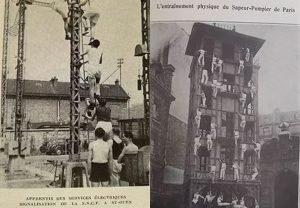 In addition, everywhere in France and in the world, (Germany, Austria, Australia, Belgium, Canada, Cuba, Spain, Hungary, Italy, Jordan, Lebanon etc…) centers which will call themselves “hébertistes” are forming , at the initiative of private individuals, and apply the teachings of Hébert. This one observes, but has no connection with these centers.
In addition, everywhere in France and in the world, (Germany, Austria, Australia, Belgium, Canada, Cuba, Spain, Hungary, Italy, Jordan, Lebanon etc…) centers which will call themselves “hébertistes” are forming , at the initiative of private individuals, and apply the teachings of Hébert. This one observes, but has no connection with these centers.
It has often been said that Georges Hébert could have made a fortune with his method, but he never asked for any royalties for the use of the latter.


